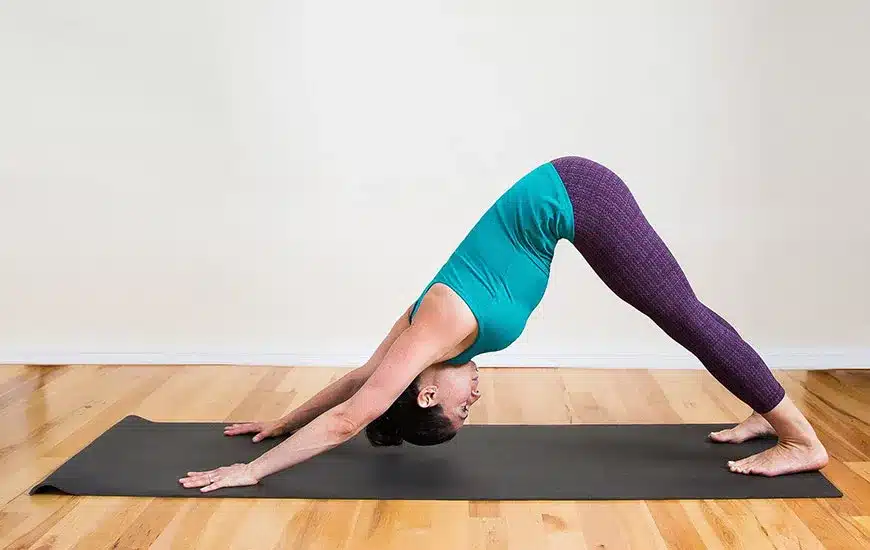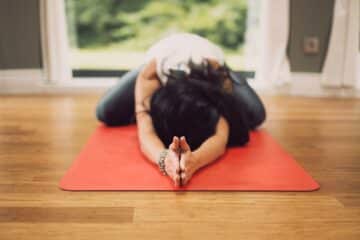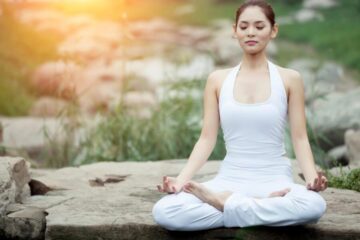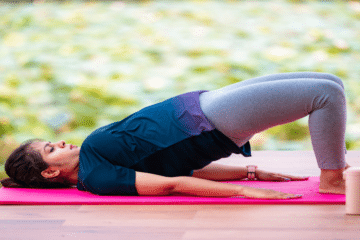The Downward Facing Dog, or Adho Mukha Svanasana in Sanskrit, is one of the most iconic yoga poses, revered for its multitude of benefits for the body, mind, and spirit. Often incorporated into yoga sequences, it serves as both a resting position and a foundational pose.
Mastering this posture requires patience, practice, and proper alignment. In this guide, we delve into the intricacies of the Downward Facing Dog, exploring its benefits, alignment principles, common mistakes, and variations.
Benefits of Downward Facing Dog:
- Stretches and Strengthens: This pose elongates the spine, stretches the hamstrings, calves, shoulders, and hands while strengthening the arms, shoulders, and legs.
- Improves Circulation: Inverting the body in Downward Dog allows for improved blood flow to the brain, promoting mental clarity and vitality.
- Relieves Tension: By releasing tension from the neck, shoulders, and back, Downward Dog offers relief from stress and fatigue.
- Enhances Posture: Regular practice of this pose helps in correcting posture imbalances and aligning the spine properly.
- Boosts Digestion: The gentle compression of the abdomen in this pose aids in digestion and can alleviate symptoms of indigestion and bloating.
Alignment Principles:
- Start from Tabletop: Begin on your hands and knees in a tabletop position, ensuring wrists are aligned under the shoulders and knees under the hips.
- Engage Core Muscles: Draw the navel towards the spine to engage the core muscles, providing stability and support for the spine.
- Lengthen the Spine: On an exhale, lift the hips upward and back, straightening the arms and legs to form an inverted V-shape.
- Keep a Microbend in the Knees: Avoid hyperextension by maintaining a slight bend in the knees, allowing for more stability and preventing strain.
- Relax the Neck and Shoulders: Let the head hang freely between the arms, allowing the neck and shoulders to relax. Avoid hunching or tensing these areas.
Common Mistakes to Avoid:
- Rounded Back: Keep the spine straight and avoid rounding the back excessively, which can strain the lower back and hamstrings.
- Collapsed Chest: Maintain openness in the chest by broadening the collarbones and drawing the shoulder blades down the back.
- Overarching the Lower Back: Avoid overarching the lower back by engaging the core muscles and lengthening through the tailbone.
- Locked Elbows: Prevent hyperextension in the elbows by maintaining a soft bend, distributing weight evenly through the hands.
- Tension in the Neck: Release tension in the neck by relaxing the head and neck completely, gazing towards the navel or between the feet.
Variations and Modifications:
- Bent Knee Downward Dog: This variation allows for deeper stretching of the hamstrings while being gentler on the lower back.
- Downward Dog with Blocks: Place blocks under the hands to alleviate wrist pressure and provide support for those with wrist injuries.
- Wall-Assisted Downward Dog: Utilize a wall for support and alignment, allowing for a deeper stretch and better understanding of the pose.
- Three-Legged Downward Dog: Lift one leg towards the ceiling for an added challenge, engaging the core and increasing hip flexibility.
- Downward Dog with Shoulder Opener: Thread one arm under the opposite arm, stretching the shoulders and chest while in Downward Dog.
Conclusion
The Downward Facing Dog is not merely a pose but a journey towards balance, strength, and inner peace.
With consistent practice and attention to alignment, this foundational posture can become a sanctuary for both body and mind, offering a myriad of physical and mental benefits.
Whether you’re a seasoned yogi or a beginner, embrace the journey of mastering the Downward Facing Dog and let it guide you towards a deeper connection with yourself.



